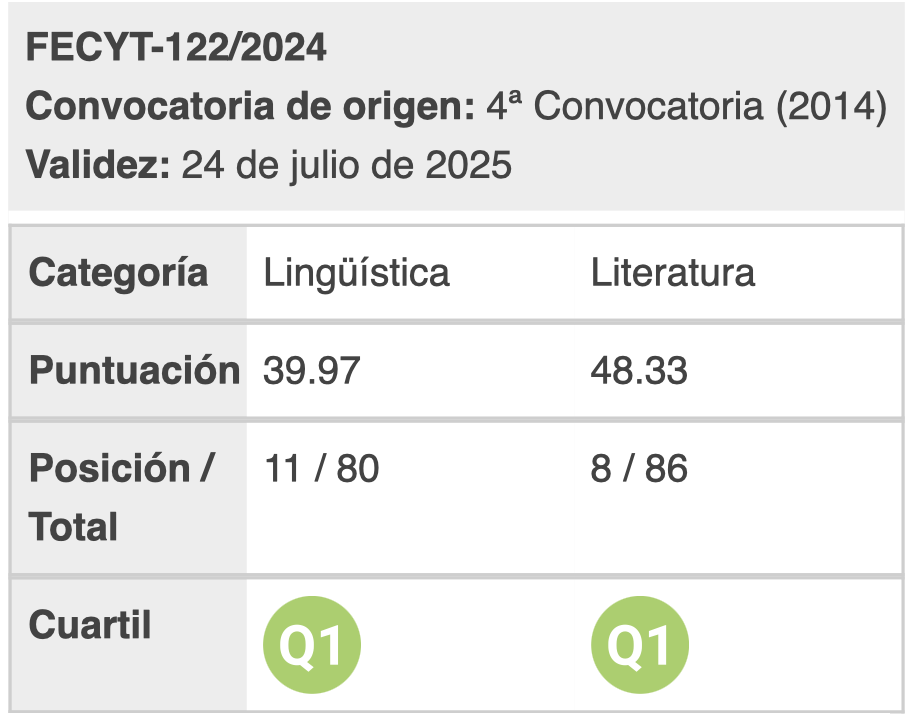Analysis of the Right to Equality in the US Inaugural Presidential Speeches
DOI:
https://doi.org/10.28914/Atlantis-2025-47.1.13Keywords:
political discourse, corpus, CARs, semantic-cognitive analysis, lexical-syntactic representationAbstract
US political basis relies on the fundamental rights of the Declaration of Independence (equality, life, liberty and the pursuit of happiness), which stem from Enlightened ideas. The question to be answered here is how the different US presidents have understood and expressed “the right to equality” in their inaugural addresses, where they present their thoughts and objectives for their term of office. Our analysis model focuses on the significance of this concept analyzed with the aid of computer tools such as NVivo and Sketch Engine, and based on the cognitive semantic constructs as expressed by US presidents, identifying the categorization and the connotative associations of this right (CARs). The results of the analysis will allow the observation of what type of lexical categories (codes) these CARs are expressed through, in addition to providing the opportunity to count, describe and illustrate them. Moreover, the results will allow the development of the expression of each CAR in the corpus to be studied according to the parameters of internal variation observed: the president involved, their ideological tendency, communicative skills, socio-political profile, and historical framework.
Downloads
Metrics
References
Anderson, O. Roger and Olive J. Demetrius. 1993. “A flow-map method of representing cognitive structure based on respondents’ narrative using science content.” Journal of Research in Science Teaching 30: 953–969.
Bercovitch, Sacvan, ed. 1995. The Cambridge History of American Literature. Vol. 1, 2 1590-1820. New York: Cambridge UP.
Biber, Douglas, Conrad, Susan and Randi Reppen. 1998. Corpus Linguistics: Investigating Language Structure and Use. New York: Cambridge UP.
Biria, Reza and Azadeh Mohammadi. 2012. “The socio pragmatic functions of inaugural speech: A critical discourse analysis approach.” Journal of Pragmatics 44 (10): 1290-1302.
Bondi, Marina. 2014. “Changing voices: Authorial voice in abstracts.” In Bondi, Marina and Lorés, Rosa Sanz, eds. 2014, 243-270.
— and Lorés, Rosa Sanz, eds. 2014. Abstracts in academic discourse: Variation and change. Series: Linguistic Insights, Vol. 187.
Čech, Radek. 2014. “Language and ideology: quantitative thematic analysis of new year speeches given by Czechoslovak and Czech presidents (1949-2011).” Quality & Quantity, 48 (2): 899–910.
Engle, Ron and Tice L. Miller, eds. 1993. The American Stage: Social and Economic Issues from the Colonial Period to the Present. Cambridge: CUP.
Ericson, David F. 1997. “Presidential Inaugural Addresses and American Political Culture.” Presidential Studies Quarterly 27 (4): 727-744.
Ferguson, Robert A. 1994. The American Enlightenment, 1750-1820. Cambridge, MA: Harvard UP.
Fillmore, Charles J. 1985. “Frames and the Semantics of Understanding.” Quaderni di Semantica 6 (2): 222-254.
— and Beryl T. Atkins. 1992. “Towards a frame-based lexicon: the semantics of RISK and its neighbors.” In Lehrer, Adrienne and Eva Feder Kittay, eds. 1992, 75-102.
— and Collin F. Baker. 2012. “A frames approach to semantic analysis.” In Heine, Bernd and Narrog, Heiko, eds. 2012, 313-339.
Giménez-Moreno, Rosa. 2020. “Lexical-semantic configuration of ordinary relational identities in multicultural groups of university students.” Language and Intercultural Communication 21 (1): 102-117.
— and Francisco M. Ivorra-Pérez. 2017. “The malleability behind terms referred to common professional roles: the current meaning of boss in British newspapers.” Quaderns de Filologia: Estudis Lingüístics 22: 105-128.
— and Eusebio V. Llàcer-Llorca. 2024. “Exploring the evolution of the concept of liberty in the U.S. presidential inaugurals.” Journal of Language and Politics. Open access. https://doi.org/10.1075/jlp.24103.gim
Heine, Bernd and Narrog, Heiko, eds. 2012. The Oxford Handbook of Linguistic Analysis. Oxford: OUP.
Ilie, Cornelia, ed. 2010a. European Parliaments under scrutiny: Discourse strategies and interaction practices. Amsterdam, Netherlands: John Benjamins.
—. 2010b. “Strategic uses of parliamentary forms of address: The case of the UK Parliament and the Swedish Riksdag.” Journal of Pragmatics 42 (4): 885–911. doi: 10.1016/j.pragma.2009.08.017
Krzyżanowski, Michal. 2010. The Discursive Construction of European Identities. Frankfurt: Peter Lang.
—. 2016. “Recontextualization of neoliberalism and the increasingly conceptual nature of discourse: Challenges for critical discourse studies.” Discourse & Society 27 (3): 308–321.
Kubát, Miroslav and Radek Čech. 2016. “Quantitative Analysis of US Presidential Inaugural Addresses.” Glottometrics 34: 14-27.
Lehrer, Adrienne and Eva Feder Kittay, eds. 1992. Frames, Fields and Contrasts. New Essays in Semantic and Lexical Organization. New York: Routledge.
Liu, Fang. 2012. “Genre Analysis of American Presidential Inaugural Speech.” Theory and Practice in Language Studies 2 (11): 2407-2411.
McEnery, Tony and Andrew Hardie. 2012. “Corpus Linguistics: Method, Theory and Practice.” International Journal of Corpus Linguistics 18 (2): 290-294.
Mohammadi, Vali, Abdi, Reza and Hadi Eisazadeh. 2020. “Inaugural Addresses of American Presidents: A CDA-oriented Analysis of Party Affiliation.” Applied Research on English Language 9 (4): 539-560.
Ryan, Halford R., ed. 1993. Inaugural Addresses of Twentieth-Century American Presidents (eBook) eBook Download: PDF | 1. Auflage 352 Seiten ABC-CLIO (Praeger Verlag).
Swales, John M. 1990. Genre analysis: English in academic and research settings. Cambridge: Cambridge UP.
Widiatmoko, Paulus. 2017. “Analysis of Presidential Inaugural Addresses Using Searle’s Taxonomy of Speech Acts.” English Review: Journal of English Education 5 (2): 275-282.
Wodak, Ruth. 1989. Language, Power, and Ideology: Studies in Political Discourse. Amsterdam: John Benjamins.
Xue, Jiao, Mao, Zan. and Na Li. 2013. “Conceptual Metaphor in American Presidential Inaugural Addresses.” Theory and Practice in Language Studies 3 (4): 678-683.
Downloads
Published
How to Cite
Issue
Section
License
Copyright (c) 2025 Eusebio V. Llacer-Llorca, Rosa Giménez-Moreno

This work is licensed under a Creative Commons Attribution-NonCommercial-ShareAlike 4.0 International License.








